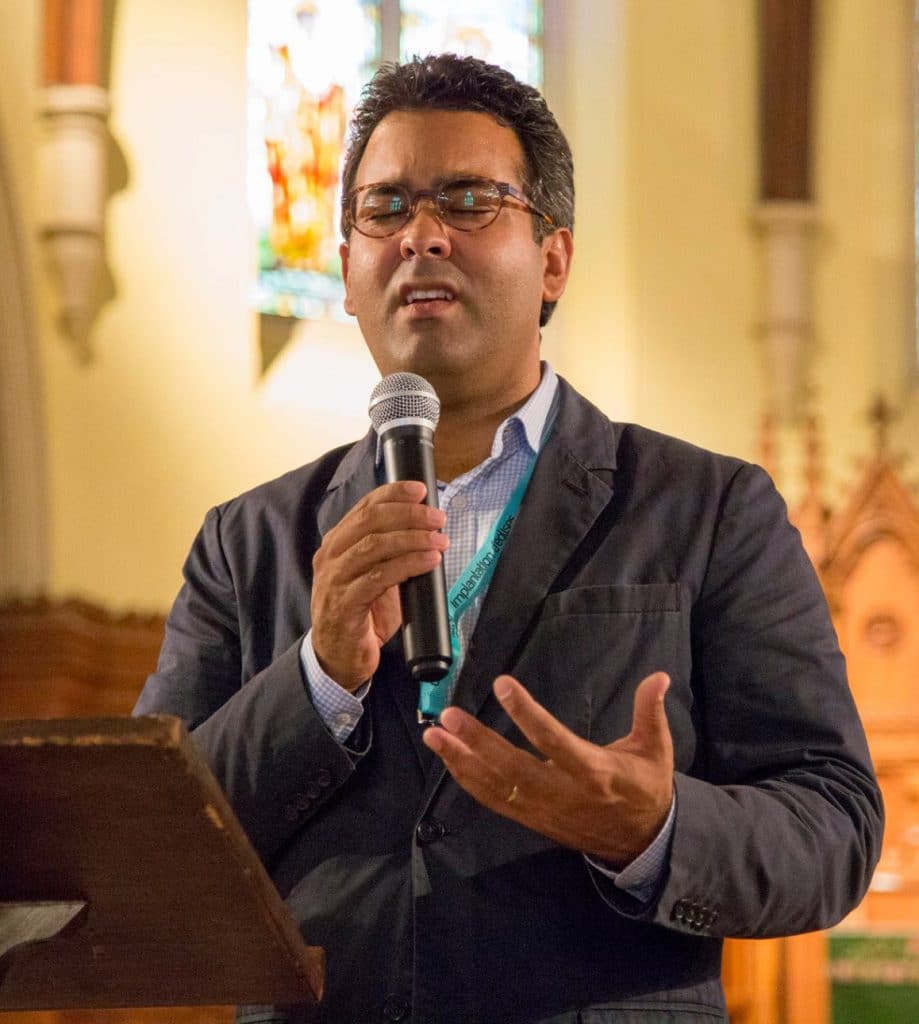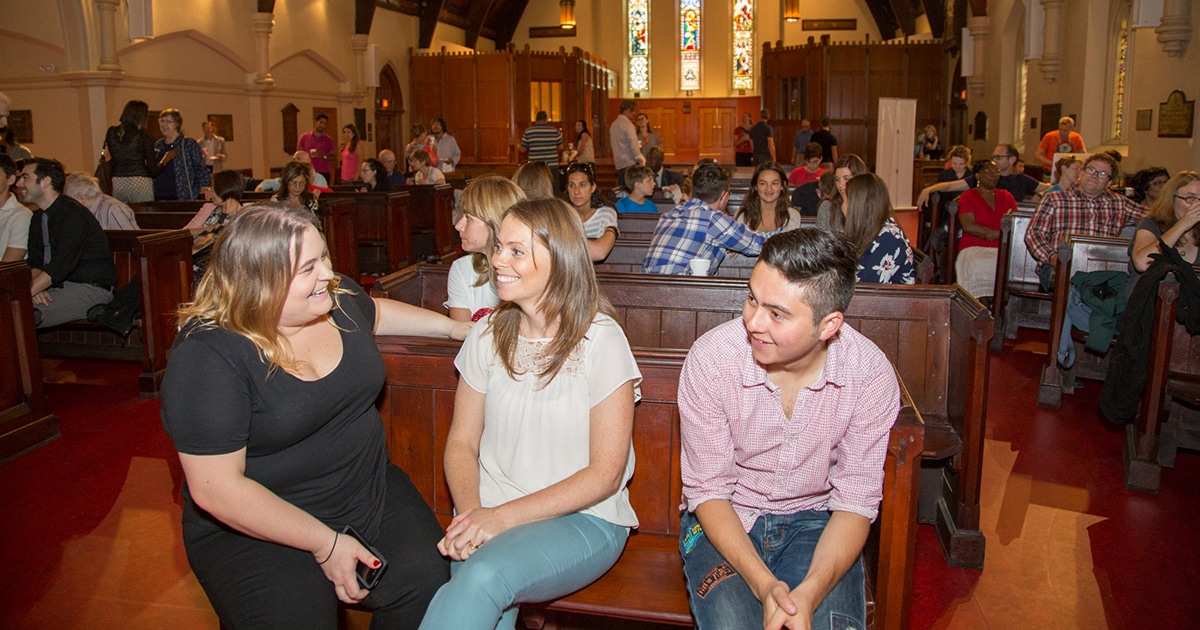The following is the first instalment of a two-part article detailing experiences of the Alpha course in the Anglican Church of Canada.
Pioneered in the late 1970s at Holy Trinity Brompton (HTB) church in London, England, the Alpha course has found a niche at many Canadian Anglican parishes as a method of teaching basic tenets of the Christian faith.
An evangelical course built around talks and group discussion, Alpha is now the primary method of worship at St. Jax Montréal, a mission parish and church plant at the site of the former St. James the Apostle Church. During a nine-month period last year, St. Jax had no Sunday service outside the Alpha course.
“We stopped everything, and I would say everything else is supplemental to Alpha,” said the Rev. Graham Singh, a veteran church planter who now leads the congregation at St. Jax as parish incumbent.
Though its focus on Alpha is greater than most, the approach of St. Jax reflects the experience of many other Anglican congregations that have found in the course a worthwhile method for attracting seekers and building disciples.
Alpha at St. Jax
St. Jax Montréal first presented the Alpha course at its Easter 2016 reopening, which served as a “pre-launch”. Instead of traditional Sunday services, participants gathered for bagels and coffee and took part in a moment of worship before hearing a talk on an introductory topic, such as the identity of Jesus, the meaning of his death and resurrection, and forms of prayer.
An open discussion would follow. The discussion groups started out in a bilingual English-French format, but soon came to incorporate additional languages such as Mandarin Chinese and Farsi, reflecting the multiculturalism of the surrounding area. St. Jax also offers an Alpha course for children and youth.
“The whole point of Alpha is to give people that space for questions and present the gospel in a very clear, simple way that could be accepted by any denomination in any culture,” Singh said.
“The discussion is completely local,” he added. “So it could be in Farsi, it could be in French, it could be with kids, it could be with older folks. That’s the point, is that it adapts to its local region.”

Singh first became a proponent of the Alpha course after attending HTB as a graduate student. Returning to Canada as a “missionary” for the “HTB model” centred around Alpha, Singh took part in national meetings known as the Canadian Church Buildings Conversation. Discussions with Anglican bishops across Canada resulted in an invitation for Singh to come to Montréal to plant the HTB model at a flagship parish church in the downtown area.
The choice of St. James the Apostle stemmed from the parish’s inability to continue in its current state due to a lack of financial resources. After several years of attempting to find another sustainable solution for parish and building health, approximately 60 members of the St. James congregation remained.* Bishop Mary Irwin-Gibson assigned a curate to help those who still wished to experience traditional Anglican liturgical services find a new home parish, while extending an invitation to the remaining 60 to join St. Jax. One-third chose to join the new church plant.
“We knew of Holy Trinity Brompton doing [the Alpha course], and how they kept getting more and more people coming, and how the church was growing and there were new churches spawning and so on, but I never saw how that happened,” Bishop Irwin-Gibson said.
“I think the business of ‘How do you transmit your faith to the new generation?’ is a real challenge for the Anglican Church—how to make disciples and how to make new Christians, those first two Marks of Mission that we’re really struggling with.”
Elsewhere in the diocese
Singh believed that the church plant centred around Alpha had been relatively successful in the year since its pre-launch. He estimated that St. Jax now sees between 125 and 150 people Sunday participating in Sunday worship at some point each month, including families.*
The bishop said she was “encouraged” by developments at St. Jax and that the experiment offered potential lessons for future growth in the Diocese of Montréal.
However, the role of the Alpha course in new church plants may or may not mirror its function at St. Jax, with the main focus being on opening up the church to new people.
“I don’t foresee that the whole diocese is going to look like St. Jax … but I think there’s some learning, and I think St. Jax can provide some resources and some encouragement to look at the methods that we are using and to get out and find authentic ways,” Bishop Irwin-Gibson said.
“I don’t particularly care if it’s an Alpha course if you can still find a way to apply the principle that you want to be oriented towards the people who aren’t in church, instead of trying to keep the smaller and smaller contingent happy.”
Do you have experiences with the Alpha course in the Anglican Church of Canada? Share them with us on our Facebook page. Learn more about the Alpha course on the Alpha Canada website.
*A previous version of this article stated that “approximately 60 members of the St. James congregation remained who wished to sell the building”, and that an estimated 125 to 150 people attend St. Jax regularly every Sunday. Erroneous information was provided.
Interested in keeping up-to-date on news, opinion, events and resources from the Anglican Church of Canada? Sign up for our email alerts .

